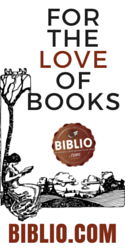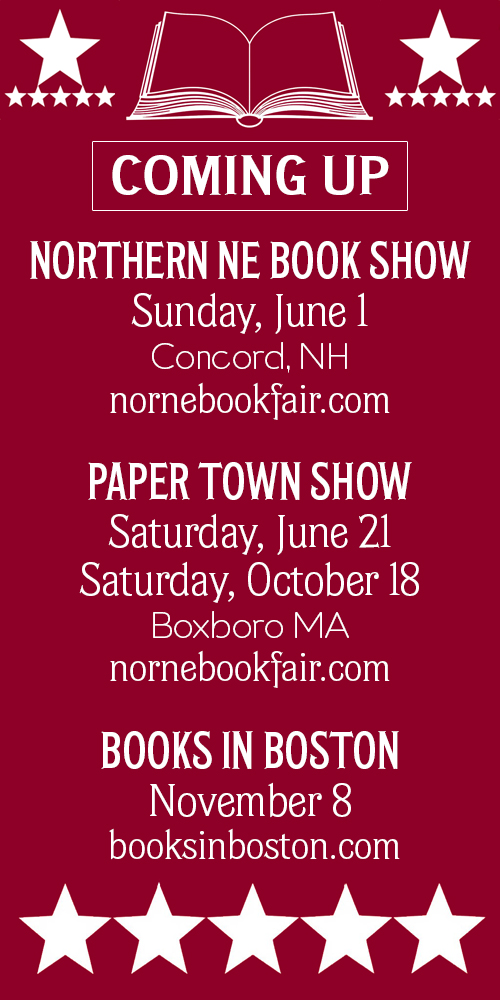Books, Diaries & History
There’s more good news to report about Book Row America. Marvin Mondlin and Roy Meador called to tell me their agent has arranged a contract with a major trade publisher on terms better than what a well-known university press had offered. Eight months ago it seemed the manuscript was going begging – but as of last week four different publishers were and are interested. Those of you thoughtful enough to send us notes and letters supporting the book and indicating a willingness to buy a copy have had an important part in this happy outcome since I’ve been passing your correspondence along to the authors and their agent. Also, I don’t think I’m telling tales out of school by hinting that we can look forward to a big book-signing shindig at the Strand Book Store early next year.
I’ve just read through the premier issue of The British Diarist, edited and published by Paul Minet, bookseller and columnist for this and other magazines. The first number contains an introduction and a personal note from the editor, at least seven articles of varying length (mainly reviews of published and unpublished diaries), relevant news notes, “The Quarters List of Diaries for Sale,” and a small amount of display advertising. The 92 pages are not only chock full of information for members of the choir and those born to the faith, but the content is broad and varied enough to win some new converts as well.
Britain is home to many collections and repositories of unpublished diaries, and the ones that eventually make it into print will always represent a tiny percentage of what’s available. Some, like those of 17th century artisan Nehemiah Wallington who “in over 20,000 pages making up 50 volumes…wrote literally millions of words struggling with his Protestant conscience to examine every detail of his life as a newly-born Christian” seem destined to remain unpublished yet knowledge of their existence serves a useful purpose for historians of the Commonwealth and early Restoration periods. The Farington Diaries, though, covering the period from 1793 to 1820 is such a valuable trove of information for students of art, music, politics and letters that it has been published by Yale University Press for the Paul Mellon Centre for Studies in British Art in a new and complete edition of sixteen volumes (bound in eight) plus index volume.
Other articles include a review of John Meredith’s Ondurman Diaries , a general essay on English Diaries up to 1750 by Jane Elliott, Barry Baldwin’s Diaries of Edward Lee Hicks (Bishop of Lincoln) , a review of the newly published diaries of A.L. Rowse, life in the Shetland Isles as revealed in the transcribed but unpublished diaries of Christopher Sandison, and Lotte Mulligan’s Lancashire Lad – the personal diary of Roger Lowe, Nehemiah Wallington’s younger and more lively 17th century near-contemporary, whose struggle to marry and establish himself in a career was self-complicated by his habit of two-timing and sometimes three-timing women with whom he supposedly had serious relationships. And, in what might be considered a mini-bombshell, in a piece by Patrick Jackson there are lengthy quotations from the diaries of Lewis Harcourt including the following entry containing information appearing in print for the first time.
17 February 1885. Lady Ponsonby told the HS (Home Secretary, ed. note) a few days ago that Miss Macleod declares that her brother Norman Macleod confessed to her on his death bed that he had married the Queen to John Brown, and added that he had always bitterly regretted it. Miss Macleod could have had no object in inventing such a story, so that one is almost inclined to believe it, improbable and disgraceful as it sounds.
Interesting diaries appeal to readers and students of history and human nature on many levels. Peeking into other people’s diaries has always held a certain voyeuristic attraction, but more than anything, I believe, diaries are low-tech time machines allowing us to see and experience the past through the eyes and minds of people who were there. And the most reliable historians consult diaries, whenever available, especially those in unedited manuscript form.
One of the books I’m reading just now that illustrates the point quite well is Desmond Morris’s The Washing of the Spears … (The Rise and Fall of the Zulu Nation), published by Simon and Schuster in 1965. The Zulu nation under Cetshwayo reached its zenith with a cattle-based economy and nearly invincible army that used military tactics developed by his uncle Shaka earlier in the century. (For a brief period the Zulus made furniture for export, but abandoned the project because they carried the term “hand-crafted” to the extreme – carving entire chairs out of one piece of wood, making their work too expensive to compete with factory-made). Zululand was roughly bordered on the south by Natal, on the west by the Orange Free State, and on the north by Transvaal. Hemmed in on all sides by colonies controlled by Europeans and those of European descent, the Zulu nation stood in the way of British imperialist interests, and it came down to a dispute over land, power, and natural resources. The small wedge of land between the Buffalo and Blood Rivers, with a southern apex at Rorke’s Drift (well east of the Drakensberg Range, the traditional western boundary of the Zulu nation) was being settled by Boers and other Europeans who wanted the grazing land for their cattle. A Boundary Commission was appointed in 1878, presided over by Michael Gallwey, an Irish barrister known for his impartiality and fairness. After sorting through claims, counter-claims, and written documents, the Boundary Commission eventually found in favor of the Zulus saying, in essence, that the European settlements between the west bank of the Blood River and east bank of the Buffalo River should either be abandoned or returned to Zulu jurisdiction. The Commission’s conclusions all but outraged General Thesiger (later Lord Chelmsford), Sir Henry Bartle Frere and others who through delays and obfuscation managed to scuttle the report. Furthermore, the Zulus posed a potential military threat since they were gradually acquiring European weaponry. With their Shaka-designed assegais and old-fashioned muzzle-loaders or “Birmingham gas pipes” that sometimes exploded in the hands of the user, the Zulus, not known for their accurate marksmanship, were no match for the English or the Boers. The Zulus, however, were beginning to acquire the new Martini-Henry breech-loading carbines and armed with these weapons with more massive destructive capability, they threatened British hegemony in the region. Bartle Frere not only refused to accept the findings of the Boundary Commission but he maneuvered the Colonial Office into accepting his view that war was inevitable and that a pre-emptive invasion was necessary.
Not much was immediately known about the battle of Isandhlwana except that an overwhelming force of Zulus all but completely annihilated the invading British column under Durnford that had crossed into Zululand, signaling the start of the Zulu War. In reconstructing a personal narrative of this event and others – such as the defense of Rorke’s Drift – Morris made considerable use of unpublished letters, diaries and other private information, indicating to me that his account, enriched by these sources, has more dimension or depth than official histories produced at the time. Magazines and journals that excerpt from and promote the study of diaries and letters should be of great interest to professional and amateur historians or anyone else wanting to mess about with a bit of armchair time-travel.


























